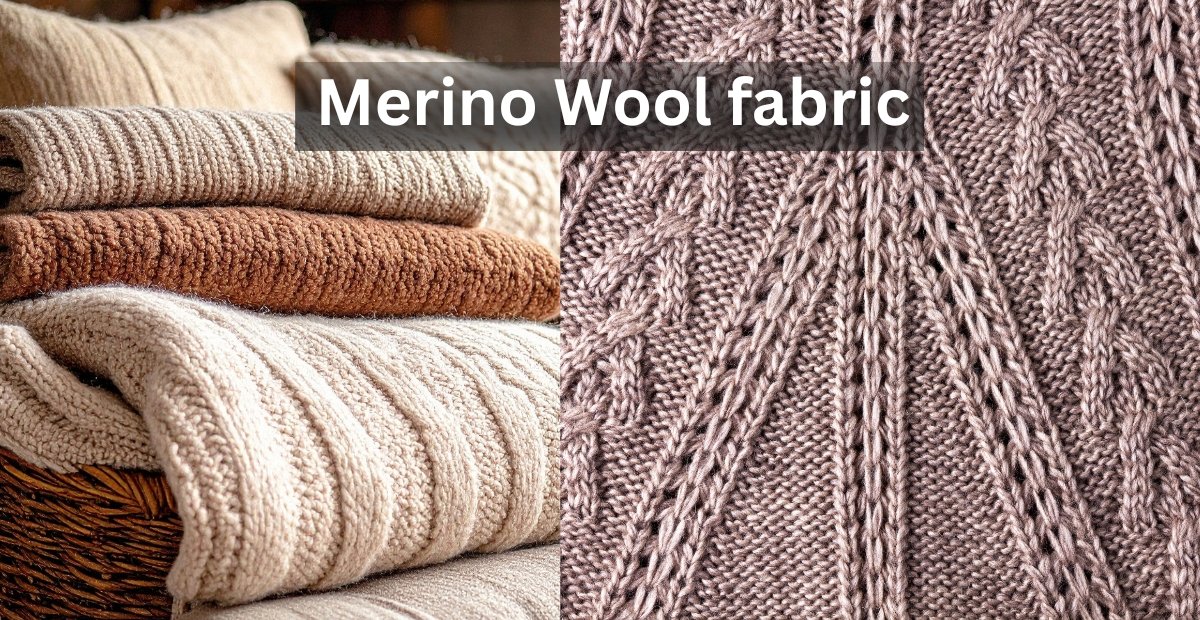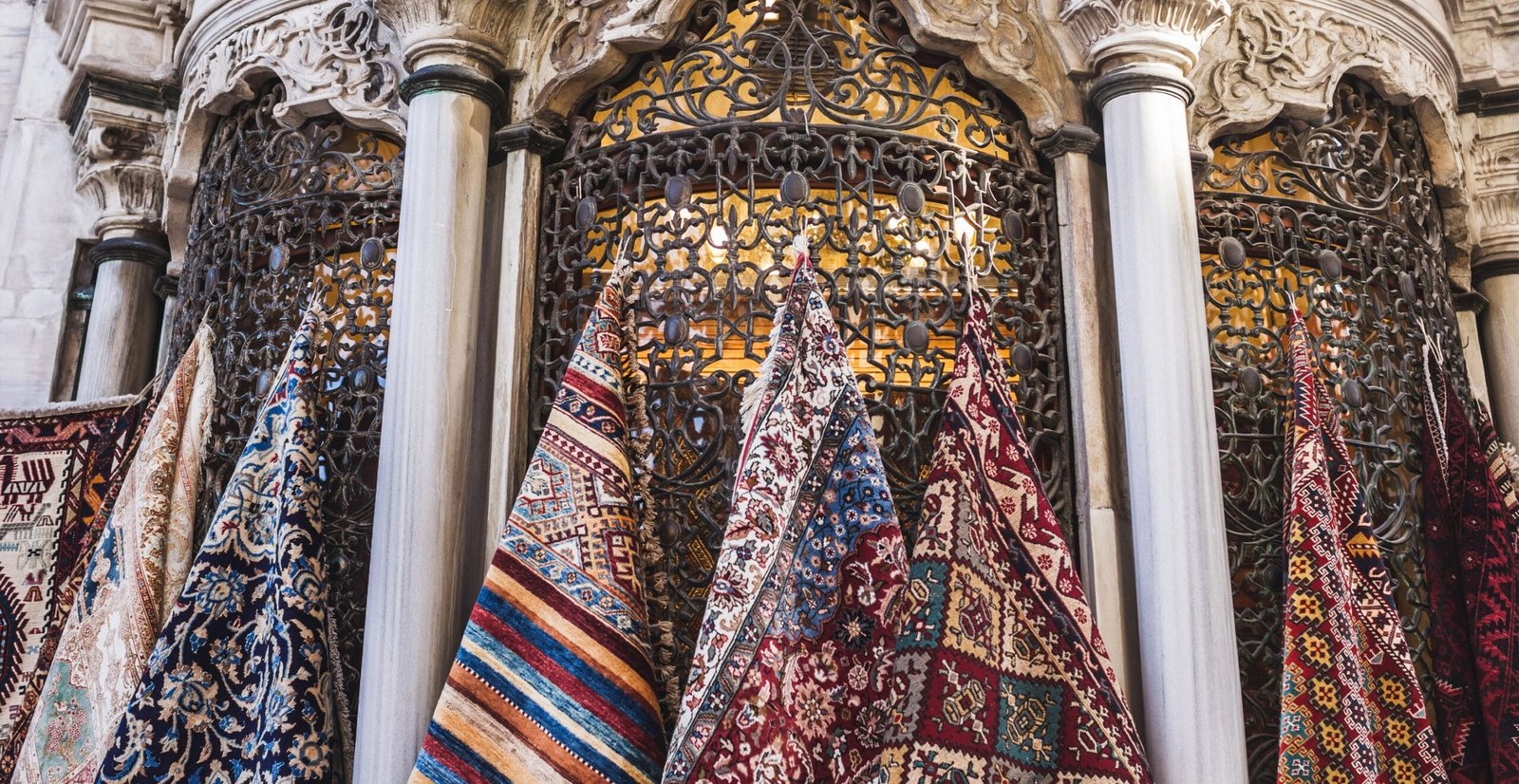One of the most valued textiles, merino wool fabric, is a prized fabric known for its softness, warmth, and incredible versatility. Unlike regular wool, merino wool is produced by a specific breed of merino sheep mostly found in Australia and New Zealand. It is finer and more elastic than regular wool, which makes it more comfortable and lighter. It is also naturally breathable and odor resistant, which makes it more expensive for use in apparel, activewear, and home, and sports décor.
This guide will explain the history, properties, benefits, available uses, and care tips of Merino wool fabric. Because of its timeless aesthetic qualities and enduring merits, Merino wool is still valued in the fabric industry.
History of Merino Wool Fabric
Merino wool fabric history goes back many centuries. In the 18th century, Merino sheep were introduced to Australia and New Zealand, where the climates were more conducive to sheep farming. As a result, these countries came to be the largest producers of Merino wool.
Merino wool fabric started to gain a reputation for luxuriousness and practicality versatility as the centuries went by. In contemporary times, Merino wool is a popular choice for high-fashion and performance sportswear. The ability to blend the old with the new is what makes Merino wool one of the best natural fibers in the world.
Properties of Merino Wool Fabric
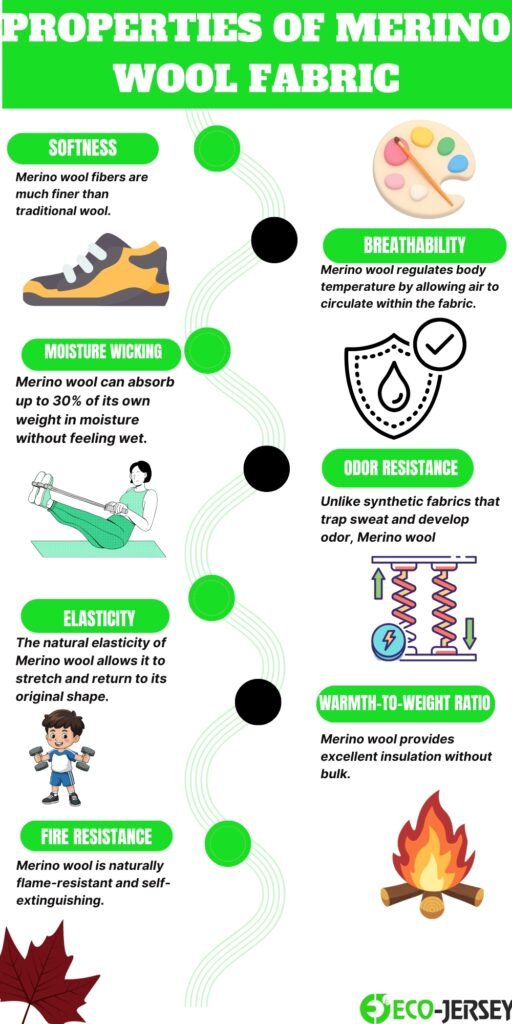
All Merino wool fabric’s qualities stem from its accomplished physical as well as natural characteristics. Below are the most notable features.
1. Softness
Compared to other wools, Merino wools are finer. Hence, there is no coarseness and skin itch due to harsher wools.
2. Breathability
Merino wools are able to maintain air in the fabric and regulate the body temperature. It keeps you cool in the summer, but warm in the winter.
3. Moisture Wicking
Merino wool can wick and absorb 30% of its weight in moisture and still not get wet. Hence, there is no moisture remaining and the skin remains time.
4. Odor Resistance
Synthetic fabrics retain moisture and are odorous, not Merino wool. It traps bacteria and neutralizes them.
5. Elasticity
Merino wool fibers are able to stretch and return to their original shape. It is also wrinkle resistant and therefore, durable.
6. Warmth to Weight Ratio
Merino wool is able to keep its wearer warm with less fabric due to its insulation properties. The fibers are lightweight yet provide warmth.
7. Fire Resistance
Merino wool fabric is self-extinguishing. This provides another safety advantage in comparison to non tweed wool fabric materials.
Merino Wool Fabric Benefits
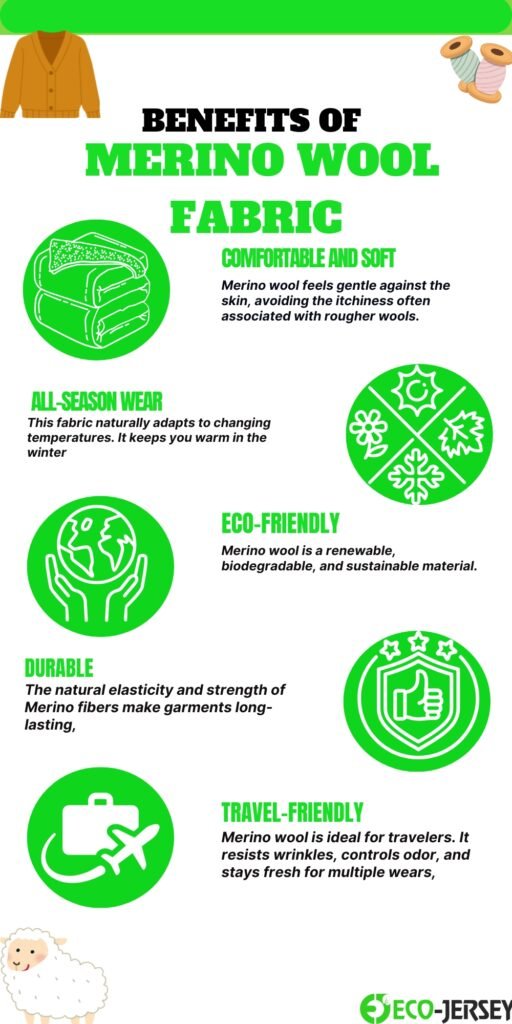
Incorporating Merino wool fabric in every-day situations is a game changer because of the numerous benefits. Merino wool offers:
Comfortable and Soft
Merino is also pleasant against the skin unlike rough wool.
All-Season Wear
Merino wool works in summer and winter.
Eco-Friendly
Merino wool is also renewable, biodegradable, and sustainable.
Durable
Merino fabric provides strong fibers and lasting clothing.
Travel-Friendly
Merino wool is perfect for travelers. It controls odor and resists wrinkles.
Merino Wool Fabric Uses
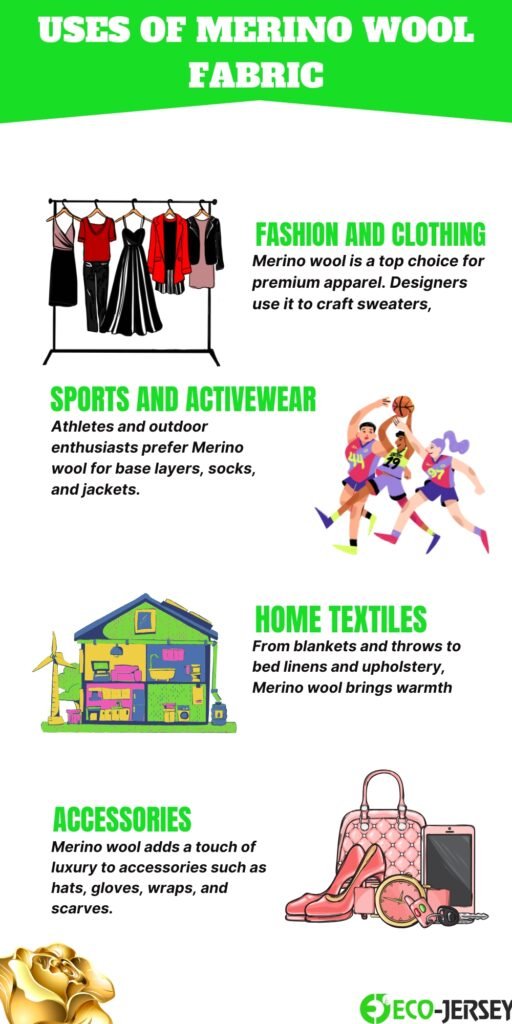
Many industries utilize Merino wool fabric for numerous purposes.
1. Fashion and Clothing
Merino wool is highly sought after for premium apparel. This includes sweaters, coats, scarves, dresses, and even suits. It is a favorite among designers for the blend of functionality and elegance.
2. Sports and Active Wear
Merino wool fabric is the favorite of athletes and outdoor lovers for base layers, socks, and jackets. It keeps you dry and odor free, making it ideal for hiking, skiing, and running.
3. Home Textiles
Wool blankets, throws, bed linens, and upholstery will all incorporate Merino wool. Its coziness and heat will brighten any living space.
4. Accessories
Merino wool also elevates the luxuriousness of hats, gloves, and even scarves.
Disadvantages of Merino Wool Fabric
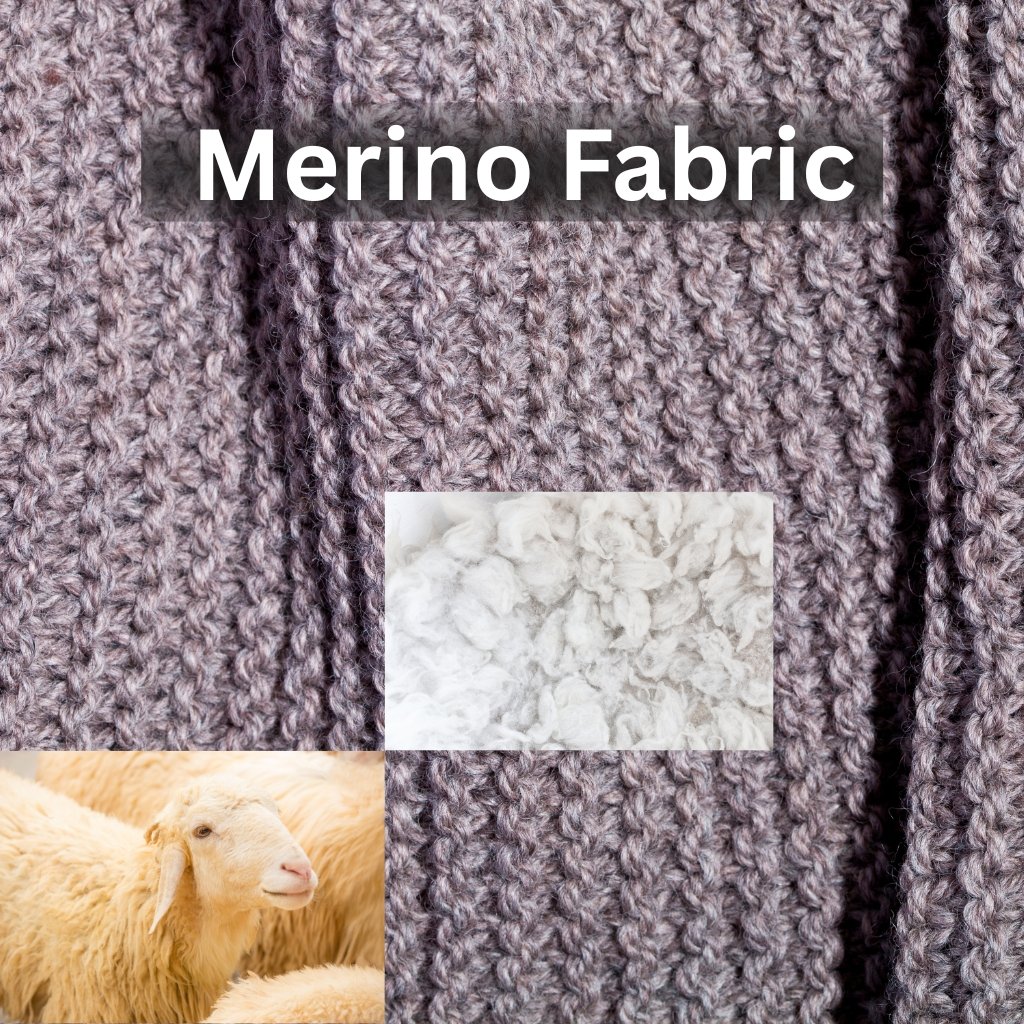
Merino wool fabric is also costly. In comparison to normal what is wool fabric synthetic fabrics, and wool, Merino wool is much more costly.
Some Merino wool garments, also, take more time to care for as they need to be hand washed or dry cleaned, which cannot be sustainable for some people.
Fine wools also may be somewhat more fragile and deteriorate quicker than even coarse wool fabric.
Caring for Merino Wool
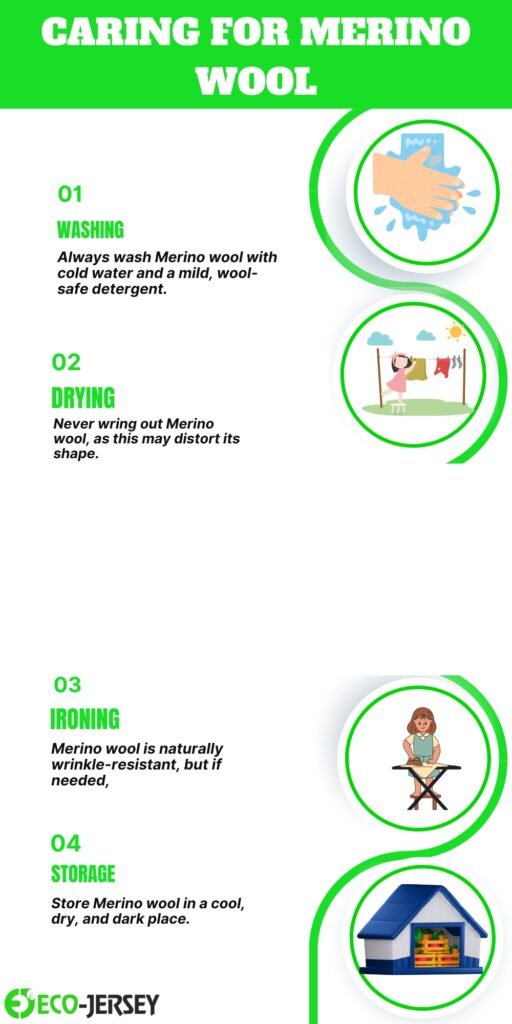
Merino fabric will last longest if you wash and dry it properly.
- Washing: Cold water and mild detergent are best, along with hand washing or a gentle machine cycle.
- Drying: You should not wring it out. Lay the fabric flat to dry.
- Ironing: You may also want to release wrinkles with low heat steam.
- Storage: Keep the Merino fabric in a dry, cool, and dark place. Use breathable bags as you store it to keep your Merino wool protected from moths.
This will provide structure and increase the lifespan of the fabric.
Sustainability of Merino Wool Fabric
Among the various fabrics out there, Merino wool ranks high on the sustainability list. Because we fleece sheep every year, the fiber is considered a renewable resource. Furthermore, Merino wool is biodegradable, leaving no plaque after decay. Because Merino wool garments last for a long time, the number of replacements and, therefore, the amount of waste is minimized.
The blend of comfort, performance, and eco-friendliness is what makes Merino wool a responsible choice for sustainable fashion.
Conclusion
There will remain few fabrics as versatile and luxurious as Merino wool. Its softness, breathability, warmth, and durability will keep it beloved for both high fashion and performance apparel for years to come, and it being a green, eco-friendly, and sustainable material will accomplish it for decades to come.
FAQs
Is Merino Wool Fabric suitable for sensitive skin?
Yes, Merino wool is substantially softer than ordinary wool and is frequently acceptable for people with delicate skin.
Can you wear Merino Wool Fabric in summer?
Yes, its breathability properties and the ability to wick moisture away from the skin makes Merino wool comfortable in hot weather.
Does Merino Wool Fabric shrink easily?
Yes, Merino wool will shrink if you wash it with hot water or agitate it. Be sure to follow the care instructions.

